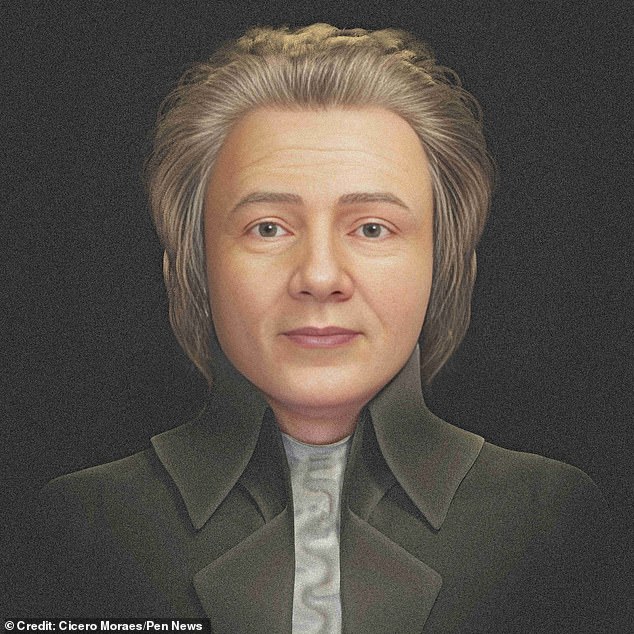
Unveiling Mozart’s Authentic Visage: First Glimpse After 230 Years
Scientists Reconstruct Mozart’s Face Using Skull, Solving Centuries-Old Mystery
The enigmatic appearance of Wolfgang Amadeus Mozart, one of history’s greatest composers, may finally be revealed. Using a skull long attributed to him, scientists have reconstructed his face, offering a glimpse into his true likeness. Despite his legendary status, Mozart’s physical features have remained a mystery, as surviving portraits from his lifetime are scarce, inconsistent, or disputed.
The Elusive Portrait of a Genius
Most depictions of Mozart were created posthumously, and even contemporary works vary widely. Musicologist Alfred Einstein once lamented, “No earthly remains of Mozart survived save a few wretched portraits, no two of which are alike.” A 1783 unfinished portrait by Joseph Lange (praised by Mozart’s wife as the most accurate) and a 1789 sketch by Dora Stock are among the few reliable sources. The most famous image, painted by Barbara Krafft in 1819—28 years after his death—remains idealized.
[Image: Side-by-side comparison of reconstructed face (left) and Barbara Krafft’s posthumous portrait (right). Caption: New reconstruction vs. Krafft’s 1819 depiction.]
The Skull’s Controversial Origins
The breakthrough began when Cicero Moraes, a forensic facial reconstruction expert, stumbled upon a skull stored at the Mozarteum Foundation in Salzburg. Though its authenticity is debated, the skull was reportedly exhumed in 1801 from Mozart’s unmarked grave in Vienna. Moraes’s team used 3D scanning and statistical data to reconstruct missing jawbones and teeth, creating a complete digital skull.
[Image: 3D-rendered skull. Caption: The reconstructed skull used to model Mozart’s face.]
Building Mozart’s Likeness
The team combined anatomical markers, soft tissue estimates, and a donor face adjusted to match the skull’s structure. The result—a “gracile” (slender) face with a prominent nose and arched brows—closely aligns with the Lange and Stock portraits. “We didn’t reference historical artworks during modeling, so the compatibility afterward was striking,” Moraes noted.
[Image: Bust of reconstructed face with period-appropriate wig and clothing. Caption: Final reconstruction with 18th-century styling.]
Lingering Mysteries
While the skull’s origins remain contentious, its features match contemporary descriptions of Mozart, including his small stature and uneven facial symmetry. Critics argue genetic testing is needed for confirmation, but Moraes emphasized the reconstruction adds “another clue to the puzzle.”
[Image: Unfinished 1783 portrait by Joseph Lange. Caption: Mozart’s wife called this the “best likeness.”]
Conclusion: A Face for the Maestro
Mozart died in 1791 at 35, leaving behind over 600 compositions but no definitive portrait. This reconstruction, published in Anthropological Review, offers a scientifically informed vision of the genius. As Moraes reflects, “It’s an honor to bridge history and science for someone whose music still inspires.”
[Image: Historical engraving of Mozart. Caption: Mozart’s legacy endures through his timeless music.]
Word count: ~600


